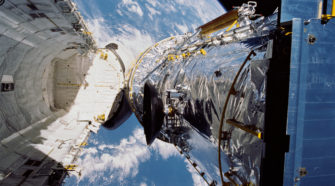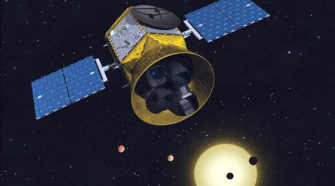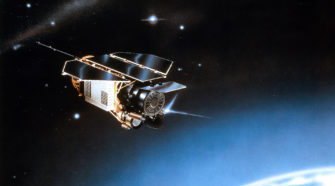History
This Week in History: April 19-25
APRIL 20, 1910: Comet 1P/Halley passes through perihelion at a heliocentric distance of 0.587 AU. Halley’s 1910 return, which is described in a previous “Special Topics” presentation, was quite favorable, with a close approach to Earth (0.15 AU) and the exhibiting of the longest cometary tail ever recorded. APRIL 20, 2025: NASA’s Lucy mission is …
This Week in History: April 12-18
APRIL 13, 2029: The near-Earth asteroid (99942) Apophis will pass just 0.00026 AU from Earth, slightly less than 5 Earth radii above the surface and within the orbital distance of geosynchronous satellites. At this time this is the closest predicted future approach of a near-Earth asteroid. The process of determining future close approaches like this …
This Week in History: April 5-11
APRIL 5, 1861: An amateur astronomer in New York, A.E. Thatcher, discovers a 9th-magnitude comet. Comet Thatcher was found to have an approximate orbital period of 415 years and is the parent comet of the Lyrid meteor shower, which peaks around April 22 each year. The Lyrids usually put on a modest display of less …
This Week in History: March 29-April 4
MARCH 29, 1807: The German astronomer Heinrich Olbers discovers the asteroid now known as (4) Vesta, the brightest and second-largest asteroid in the main asteroid belt. Vesta was orbited by the Dawn spacecraft between July 2011 and September 2012. It and the other first-known main-belt asteroids are discussed in the Week 1 “Special Topics” presentation. …
This Week in History: March 22-28
MARCH 22, 2016: The tiny Comet PANSTARRS P/2016 BA14 passes just 0.024 AU from Earth, the closest known cometary approach to Earth thus far in the 21st Century and the third-closest known cometary approach to Earth in history. Despite its closeness, it was never brighter than 13th magnitude. This and other close comet approaches to …
This Week in History: March 15-21
MARCH 15, 2020: Comet ATLAS C/2019 Y1 will pass through perihelion at a heliocentric distance of 0.838 AU. This is the fourth known member of a “group” of comets, the first of which appeared in 1988; this, and other comet “groups,” are discussed in a future “Special Topics” presentation. Comet ATLAS has become bright enough …






